
Mother nature has blessed Dak Lak with beautiful rivers, stunning mountains, scenic valleys, and primeval forests. This unique location is also known for its diverse cultural identities and cuisines.
Dak Lak is located in the center of the Central Highlands, at the headwaters of the Serepok River system. The Ba River basin makes up a significant portion of this region, which has two distinct seasons: the rainy season from May to October, and the dry season from November to April. The average temperature throughout the year is 24 degrees Celsius.
Dak Lak is most beautiful around the end of November, once the rainy season has passed. The weather in the first months of the year is often quite pleasant. The end of February and the beginning of March is coffee flower season. April is the season for Bombax Ceiba flowers, and November is wild sunflower season. In the Central Highlands summer, it frequently rains in the late afternoon, but it quickly clears up. Therefore, you should plan most of your outdoor activities in the morning.
Dak Lak has many places to explore within 50 kilometers of Buon Ma Thuot's city center. But the region’s most dramatic and beautiful natural attractions are quite far from the center, so consider taking a trip of about 3 days and 2 nights, or longer if you have more time.
Buon Don tourist area
More than 50 kilometers from Buon Ma Thuot Town, Buon Duon is known as the "land of elephants," and is famous for its traditions of trapping, taming, and raising wild elephants.
In Buon Don, you will hear stories about elephant trappers and mahouts (who domesticate elephants), visit a hundred-year-old ethnic minority stilt house and tour the unique tomb of the elephant hunter Ama Kong. You can feed the elephants and take pictures with them under the supervision of guards.
There are also a number of beautifully decorated ethnic minority buildings, where young people love to take pictures.

Because it is far from the city center, you should stay in Buon Don for lunch, which can cost about VND100,000 ($4.27) per person. Try local dishes like com lam (rice in bamboo tubes), grilled chicken with salt and green chili, wild vegetable hot pot, and sour soup with halibut.
Buon Don also features a 1 kilometer swaying bamboo suspension bridge.
Tickets to the suspension bridge cost VND40,000 ($1.71) per person, to the ancient stilt house VND15,000 (64 cents) and to the elephant king's tomb: VND 10,000 (43 cents).
Ancient stilt house of the Elephant King
The stilt house in Buon Don is 130 years old. The entirely wooden house’s design follows traditional Laotian architecture. Visitors will discover more about how "Elephant King" Khun Yu Nob captured and trained the 400 elephants that were once under his control.
Tomb of the Elephant King
Buon Don is also home to the tomb of Khun Yu Nob, which reflects both M'nong and Laotian architecture. King Bao Dai, the 13th and final emperor of the Nguyen dynasty, built the tomb to thank the Elephant King for the gift of a white elephant. Khun Yu Nob had also assembled a team of elephants for Bao Dai, another reason he’s still honored to this day.
Troh Bu Garden
Troh Bu Garden is the first eco-tourism farm in Buon Don. Troh Bu offers different picnic activities. Tours can also provide travelers with a wealth of knowledge about local forests’ trees and flowers, including wild orchids and other wildflowers. Troh Bu Garden offers dining and accommodation services if you want to stay overnight. An entry ticket costs VND35,000 ($1.49) for adults and VND20,000 (85 cents) for children.
Hoc Ca Sau Lake
Hoc Ca Sau Lake, about 40 kilometers from Buon Don, is a favorite photo spot for tourists. The blue lake is called Hoc Ca Sau (Crocodile Box), because the rocks around the lake look like a crocodile immersed in a water box from above.
You can easily find this place on an online map or ask locals for directions. You shouldn't swim here or climb too high on the uneven rocks because the lake water is frigid and there are few people around to help in an emergency at this remote location. Visiting Hoc Ca Sau is free of charge.
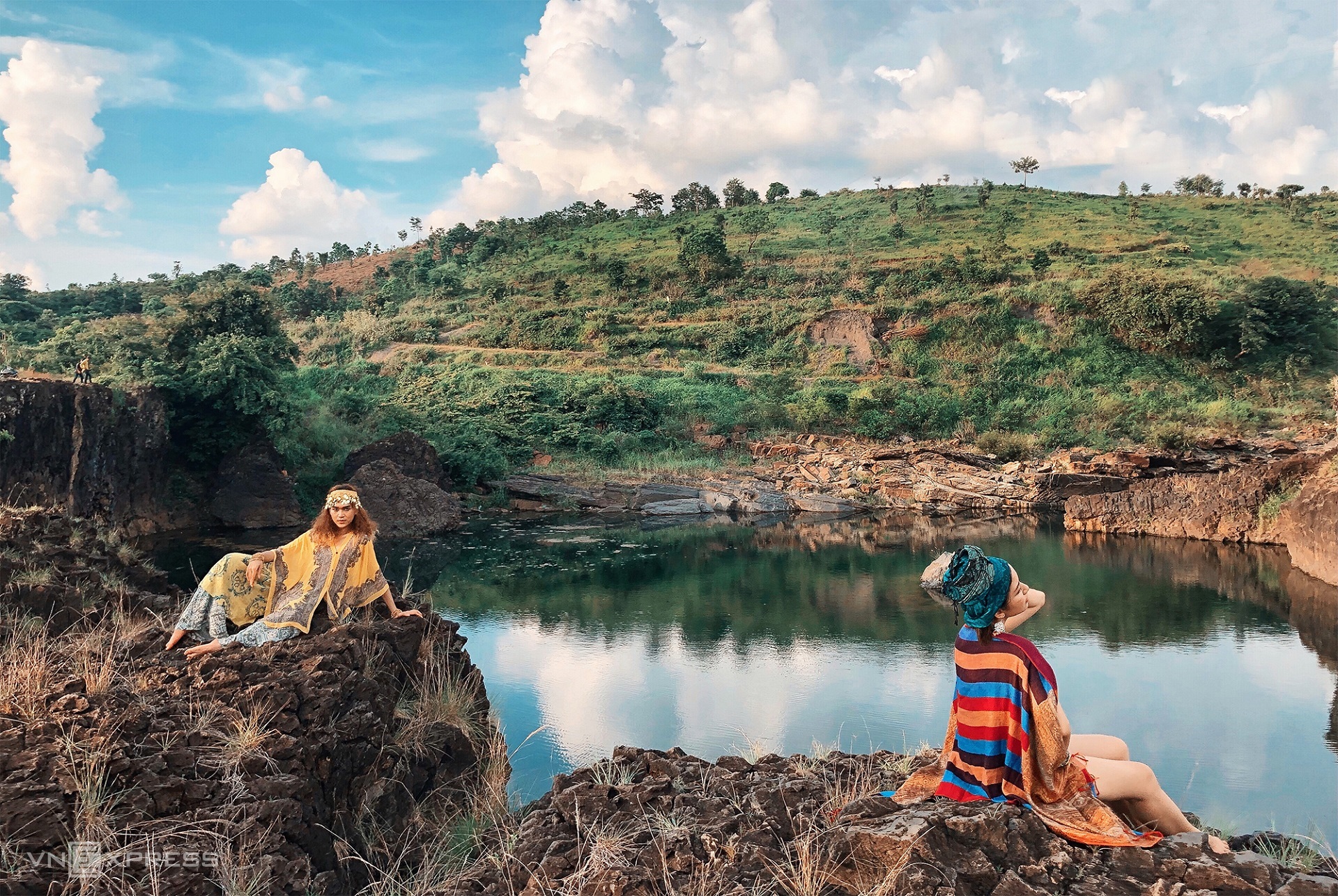
Yang Tao Elephant Rock
Before reaching Lak Lake, travelers will pass Yang Tao Elephant Rock about 40 kilometers from the center of Buon Ma Thuot. This is a pair of giant monolithic rocks shaped like elephants. One is a large rock near the foot of a mountain called "Da Voi Me" (Mother Elephant Rock). A smaller rock called "Da Voi Cha" ( Father Elephant Rock) is about 5 kilometers away in the middle of a field.
Follow the directions on an online map and you will find an information board saying "Visit Mother Elephant Rock." About 200 meters further ahead, you can park your motorbike with a drink vendor for VND5,000 (21 cents) per bike. Then, after you walk along a short trail, you will come to the foot of the rock. You can climb to the summit of the rock, which is neither too high nor too risky, to get a panoramic view of the surrounding area and part of Chu Yang Sin Forest. This site does not charge an entrance fee.

From the summit of Yang Tao Elephant Rock, you get a complete view of the surrounding area. Photo by VnExpress/ Minh Duc
Lak Lake
Lak Lake is the second largest natural freshwater lake in Vietnam after Ba Be Lake in the northern province of Bac Kan. Lak is surrounded by large mountains with primeval forests. Arriving at Lak Lake at about 4:30 p.m. is the perfect time to catch the sunset.
On the lake you’ll see dugout canoes, the typical waterway vehicles of the Central Highlands. Taking a canoe boat ride around the lake is a fun way to start your visit, and then you can go swimming and/or sightseeing.

View of Lak Lake from above. Photo by VnExpress
Here you can visit the ethnic minority areas of Jun village or M'Lieng village, where M'Nong communities live, to experience the traditional communal activities of the Central Highlands. There are two architectural monuments for visitors near the lake, including the M'Nong people’s longhouse and the former palace of King Bao Dai.
Tickets for a canoe boat ride cost VND80,000-150,000 ($3.41-6.36).
Ancient pottery village
Less than 10 kilometers from Lak Lake is Yang Tao Commune, the only place in the Central Highlands that still preserves the ancient pottery craft of the M'nong Rlam people. Visitors can learn about the art of handmade pottery as well as buy ceramic products as gifts at affordable prices.
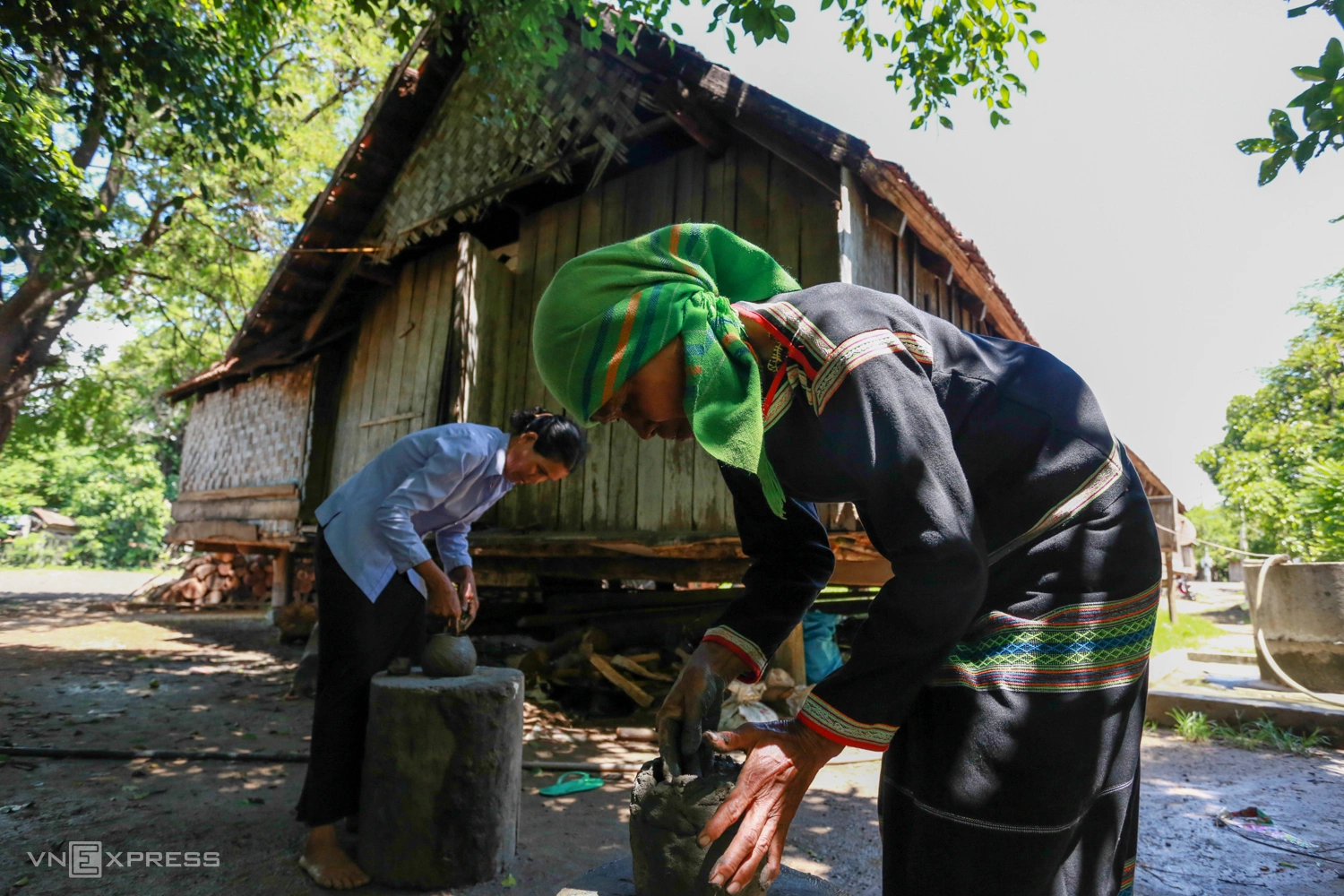
Serepok River
The Serepok River crosses through Cambodia to join the Mekong River, which then returns to Vietnam. The 406-kilometer-long Serepok boasts many majestic, unspoiled waterfalls, which can be the highlights of any trip. The Serepok is the combination of two rivers, Krong Kno and Krong Ana. The two rivers are parallel, but strangely one is red all year and the other is always blue and clear.
Dray Nur, Dray Sap Waterfalls
The beautiful Serepok River’s mountainous path has made for many waterfalls, including: Dray Sap, Dray Nur, Gia Long, Trinh Nu, Bay Nhanh, Krong Kmar, and Bim Bip.
Dray Nur is known as the Central Highlands' most magical waterfall. It is 30 kilometers from Buon Ma Thuot. The white waterfall is about 250 meters wide in the high water season, and is more than 30 meters high. At Dray Nur, travelers often bathe in rock swimming holes below the falls, and groups hang out together on the cliff behind the waterfall.
The locals refer to Dray Sap as "husband waterfall" and Dray Nur as "wife waterfall." Although they are both waterfalls created by the Serepok River, Dray Nur is in Dak Lak Province, while Dray Sap waterfall is in Dak Nong Province. But you can cross two suspension bridges to get from one falls to the other.
From Dray Nur, you can also walk to Gia Long Waterfall (also known as Dray Sap Thuong) which is two kilometers away. The road back to Dray Sap is then about 12km. Although Dray Sap waterfall is not as large as Dray Nur, its white water mists are still thrilling, which is why it’s called "smoke waterfall" in the local language.
The entrance ticket to Dray Nur waterfall is VND30,000 ($1.28). You can buy a combo ticket to visit both Dray Nur and Gia Long for VND50,000 ($2.13).

Dray Sap waterfall is also known as the "smoke waterfall". Photo by VnExpress
National parks
Dak Lak has two famous national parks, Yok Don and Chu Yang Sin, in addition to the Nam Ka and Ea So national reserves. At these sites you can go camping in the middle of the forest, bathing in waterfalls, trekking, or discover the lives of local ethnic minority communities.
Chu Yang Sin National Park has more than 40 different high and low mountain ranges, many steep slopes, vast forest carpets, and alternating streams, rapids, and waterfalls.
The Chu Yang Sin Mountains, which divides the park into two zones north and aouth, is the highest mountain range, with a peak of 2,442 meters. Chu Yang Sin’s peak is known as the second roof of the Central Highlands, after Ngoc Linh in Kon Tum Province. The journey to the top of Chu Yang Sin Mountain takes at least three days and two nights.
The remote 589 sq.km Chu Yang Sin National Park is more than 60 kilometers from Buon Ma Thuot. You can travel by motorbike from the city center to the town of Lien Son, from where you can then follow a dirt road for about 20 kilometers to the national park.
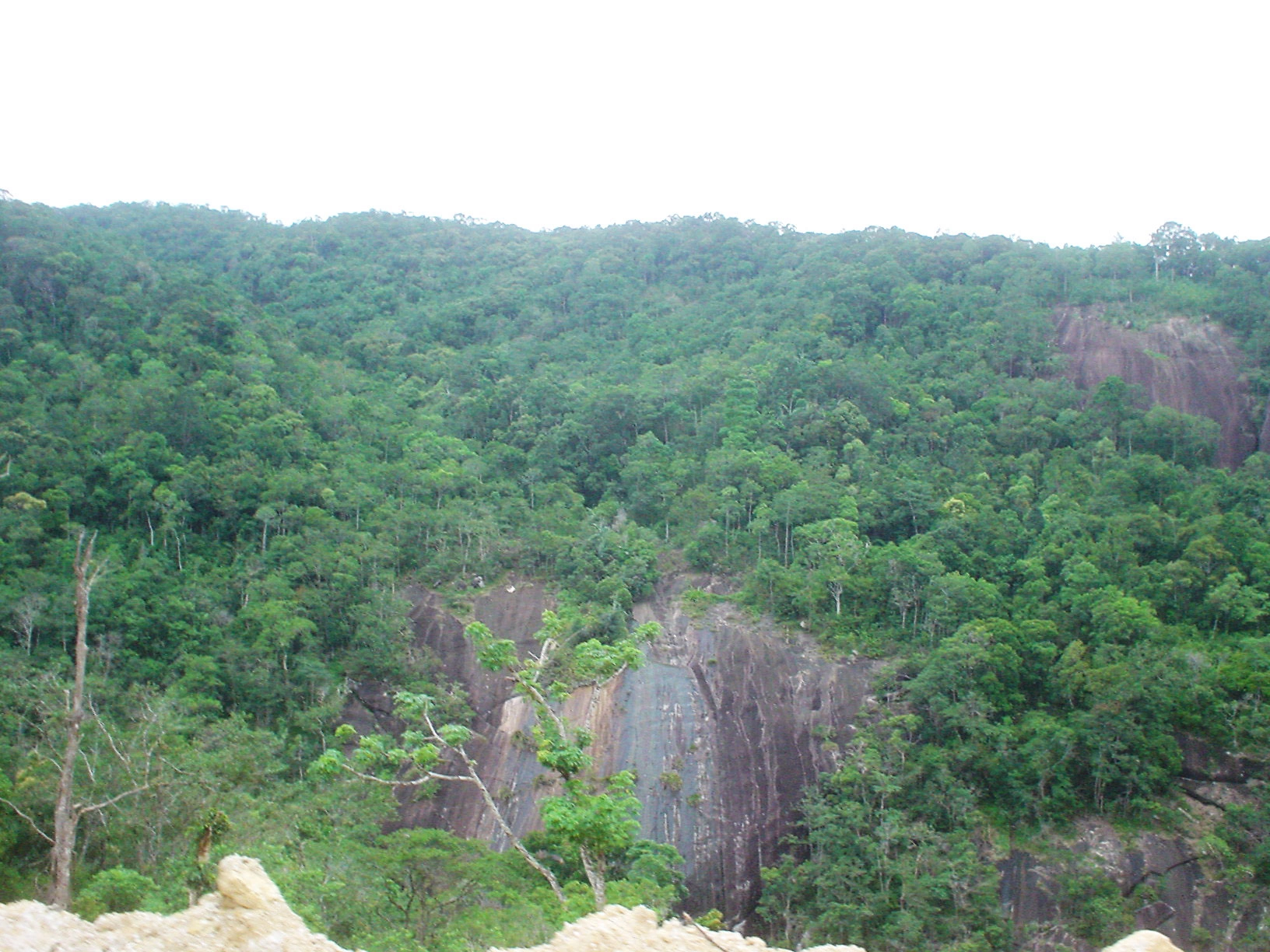
Yok Don National Park
Yok Don National Park is one of the largest nature reserves in Vietnam, home to many large mammal species such as bison, gaur, wild buffalo, elephants, monkeys, gibbons, tigers, and leopards. This preserved landscape is also home to many unique cultural values of the Central Highlands communities such as the Ede and M'Nong.
Yok Don National Park is located in both Dak Lak and Dak Nong provinces. Up to 90% of the park is primeval forest. This is the only Dipterocarp forest in Vietnam.
Yang Praong Tower
Unlike most Cham towers along the central coast, which stand on hills, Yang Praong Tower is located in an old forest. While on the walk to the tower, you can hear murmuring streams, listen to singing birds, and see brilliant wild sunflowers.
Dlieyang wind power plant field
The wind power plant field is in Dlieyang Commune, Ea H'leo District, Dak Lak Province. The field belongs to the Central Highlands Wind Power Farm Project. The dirt road to the wind farm is beautiful, but there are difficult passages.

A view of the Dlieyang wind power plant field. Photo by VnExpress/Thang Pham
You can use an online map to navigate from the Buon Ma Thuot center to Ea H'leo District and then on to Dlieyang. On the way, you'll pass Y-Jut Middle School. After traveling 3 to 4 kilometers straight on the road past the school, you'll come to the power plant field.
Buon Trap Hydropower Plant
The road leading to the hydropower plant is beautiful. On your way, you pass large valleys and ravines. Below the dam is the Buon Trap Bridge, which crosses the Serepok River. The road here has a mountain on one side and a clear blue river on the other, which makes for stunning views.
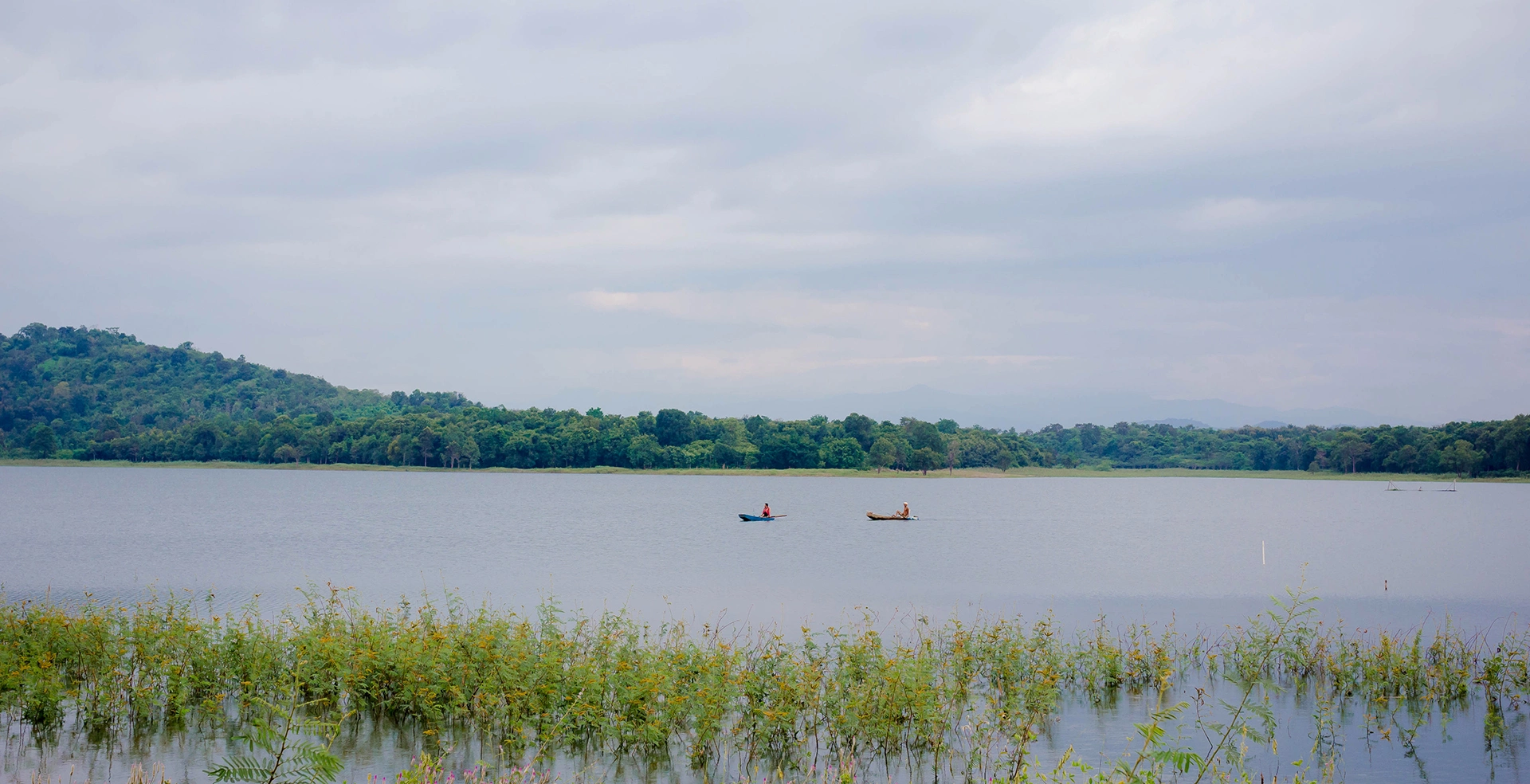
A view of the Serepok River on the way to the Buon Trap hydropower plant. Photo by VnExpress/Minh Duc
There are many accommodation options in the center of Buon Ma Thuot. Hotels such as Muong Thanh, Thanh Mai, Nice, Bazan Xanh, Biet Dien, Elephants, Sai Gon Ban Me and Hami Garden are all highly rated facilities. Prices range from VND300,000 to 900,000 ($12.28 to $38.39) a night. Some famous homestays include Zan Homestay, Lee's House, and Doi Sao Homestay, with prices ranging from VND300,000 to 1,200,000 (from $12.28 to $51.18) per night.
If you travel in a large group and love to stay close to nature, you can stay at the Ban Don tourist area or Lak Lake. Lak Tented Camp is a famous lakeside resort in Buon Ma Thuot.
Dak Lak has a rich culinary culture, which is the combination of different ethnic groups’ cuisines. Visitors have the chance to enjoy all kinds of delicious dishes such as grilled chicken, chicken sour soup, com lam (rice in bamboo tubes), sour soup cooked with salmon from the Serepok River, traditional tribal wine can, wild vegetable salad, and bitter tomato salad. A cup of local coffee in the morning is also something you should try here.
Bun do
Bun do (red noodle) is a specialty of this highland region. The name of the dish comes from the red color of the broth. The noodle soup is a combination of many ingredients: crab cakes, quail eggs, and different kinds of herbs. You can enjoy this popular dish at a soup stall on the corner of Le Duan and Phan Dinh Giot streets.

A bowl of bun do has various toppings and is eaten with herbs. Photo by VnExpress/ Tam Linh
Banh uot thit nuong
A portion of banh uot thit nuong includes a plate of banh uot (steamed rice cakes), a plate of grilled pork, and vegetables such as cucumbers, green mango, pickles and herbs. Diners roll everything into the steamed rice cakes themselves at this DIY spot, before dipping the rolls into cups of fresh dipping sauce. You can try this dish at 43 Tran Nhat Duat Street.
Canh la
Canh la of the Ede people is a wild vegetable hot pot dish. The hot pot is made from 10 different types of wild vegetables. For a first timer, it may taste strange and bitter. You can find this dish at specialty restaurants in Buon Ma Thuot.
Bagrid catfish sweet and sour soup / hotpot
Bagrid catfish sour soup or Bagrid catfish hotpot are both delicious dishes that help cool you off on sunny days. Bagrid catfish are also often served braised or cooked with crab soup. You can try these dishes at DakMe restaurant at 143 Ngo Quyen Street.
Bo nhung me
Bo nhung me (beef dipped in tamarind sauce) is another Dak Lak delicacy. The sauce has a sweet and sour taste, and is eaten with bread, watercress and salad. Diners can find this dish at 62A Le Thanh Tong Street.

Drinks
Most importantly, you have to try coffee in Dak Lak, which is known as the coffee capital of Vietnam. If you don’t know where to find the best coffee in town, just visit the Coffee Village at the end of Le Thanh Tong Street in the center of Buon Ma Thuot. Visiting on a chilly fall day is a unique experience in which you can explore the Ede longhouse and its gong rigs while warming up with a hot cup of coffee in the Central Highlands.
Can wine is known as the soul of wine culture in the Central Highlands. At traditional Dak Lak festivals and parties, you can enjoy can wine by drinking it through a wood straw from an ancient wine jar (this apparatus is called a can in the local language). All the while you’ll be listening to the melodies of the gongs and watching the locals’ rhythmic swaying dances. The New Rice Offering Ceremony, the Buffalo Slaughter Festival, the Water Wharf Worship Ceremony, and the Child Naming Ceremony are just a few of the events at which wine is offered to visitors.
Com lam and grilled chicken
Com lam (rice in bamboo tube) and ga sa lua (grilled chicken) are two famous dishes from the people of Don village. You can also enjoy this dish at restaurants in Buon Ma Thuot.
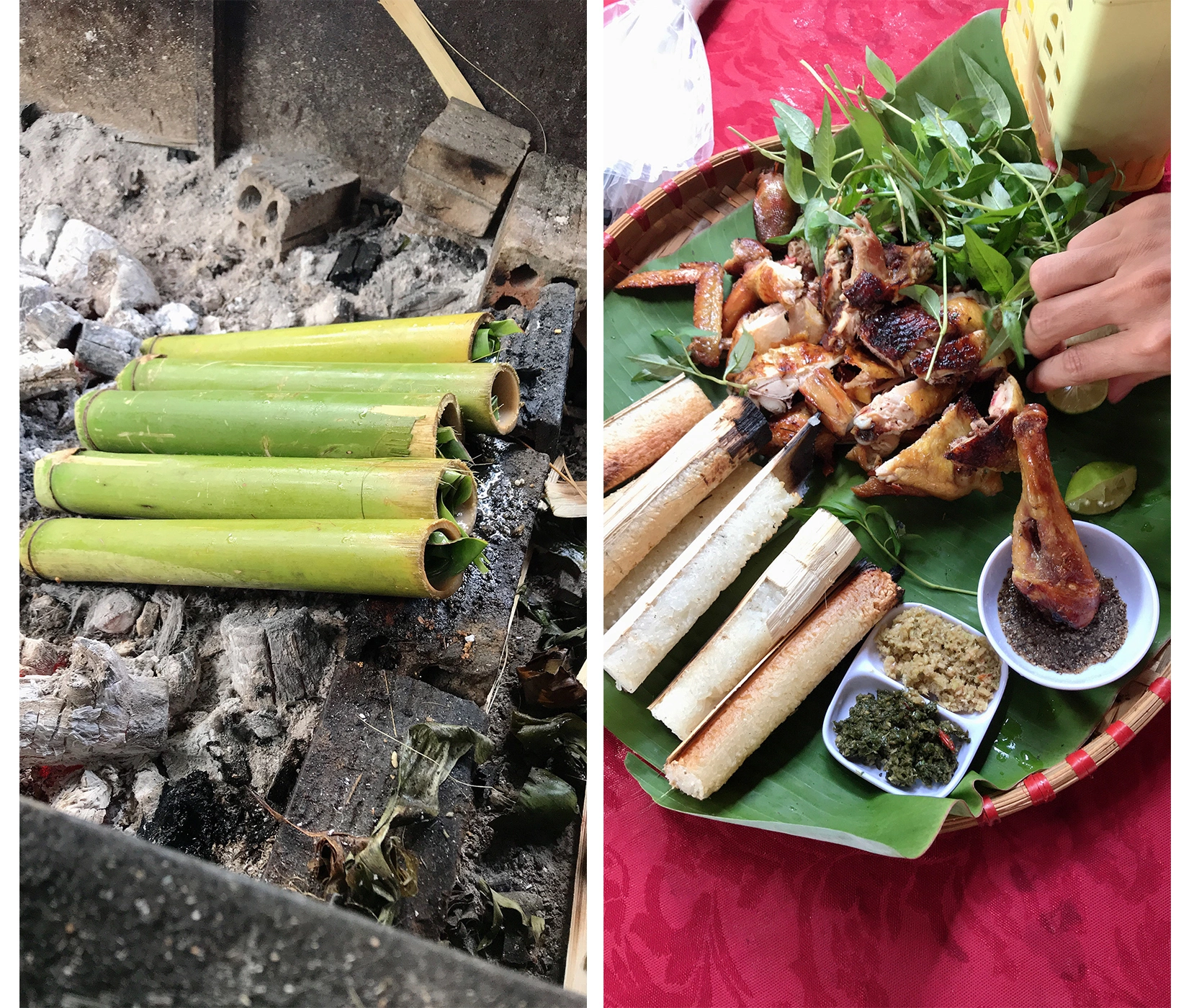
Com lam and ga sa lua can be bought in popular tourist towns like Buon Don and Buon Jun. Photos by VnExpress/Hua Quoc Anh
Buon Ma Thuot coffee, Can wine and other Central Highlands specialities such as beef jerky, dried bamboo shoots and wild honey all make great gifts to bring home. You can also find wooden handicrafts to buy for your friends and family.
Buon Ma Thuot can be reached by plane, car, bus or motorbike, depending on your starting point. Buon Ma Thuot is about 350 kilometers from Ho Chi Minh City, and about 1,400 kilometers from Hanoi.
Vietnam Airlines, Vietjet Air, and Bamboo Airways all have flights to Buon Ma Thuot. If traveling from Ho Chi Minh City, it costs between VND800,000 and 1,000,000 ($34.12 - $42.65) for a round-trip ticket. The direct flight from Hanoi takes about 1 hour and 45 minutes, and a round-trip ticket costs about VND 2,000,000 ($85.31).
Bus tickets from Ho Chi Minh City to Buon Ma Thuot range from VND200,000 - 400,000 ($8.53 - $17.06). If traveling from Hanoi, the bus fare is VND600,000 ($25.59). It takes about 8 hours by bus from Ho Chi Minh City, and more than a day from Hanoi to arrive in Buon Ma Thuot.
If you prefer the freedom of being able to stop and go along the way, you can go by car or motorcycle. Starting from Ho Chi Minh City, the best road to take is National Highway 14. The highway is in good condition, so you don't need to worry too much, but check and maintain your vehicle carefully before and after you set off.
Story by Khanh Tran